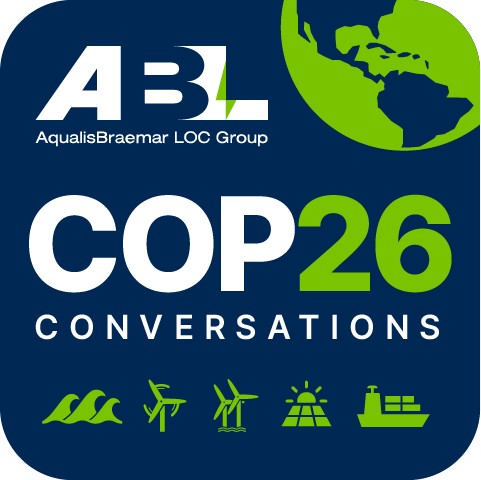Open water Floating Solar PV: Opening up new challenges?

In a recent article in PV magazine floating solar PV (FPV) was cited as having a projected growth trajectory of 20% in the coming 5 years. Currently confined to either onshore or closed water spaces, market appetite is growing for FPV at sea, with the promise of large scale expansion of one of the lowest-cost clean energy resources, without taking up scarce land reserves.
With COP26 upcoming, group company Innosea’s Benoit Briere, Snr Project Manager and Bernardo Kahn, Marine Renewable Energy Engineer, share their thoughts on the technical challenges of taking the technology to open water and how to tackle them.

Floating solar PV (FPV) is having its day in the spotlight, with an increasingly large pipeline of projects across a rapidly growing geographical area. With over 2GW of operational capacity up and running in some areas of the world, FPV so far has mostly remained in sheltered and closed water spaces, such as dams, reservoirs and quarry lakes. To make a serious dent in the global race to net-zero, how big a role FPV plays in the future global energy mix, may depend on larger-scale expansion offshore and nearshore. Taking it to sea would give FPV the chance to grow without the issue of limited space and in close proximity to large swathes of shoreline with national grids and areas of high population density in proximity. That said, going to sea also brings about a whole new set of technical challenges, which unless successfully tackled, risk the bankability that its onshore sibling is known for.
With market appetite growing for FPV, some potential location types spring to mind: nearshore ports and harbours, small island developing states, isolated grids and remote islands, and synergy projects with other sources of marine renewable energy, including offshore wind, ocean energy infrastructure and energy capture.
But what are the key technical challenges to developing FPV offshore, as opposed to inland?
Permitting and planning takes time, resources and detail!
From lessons learnt in offshore wind, we know this process takes significant time, meticulous planning and preparation around projected marine operations, as well as resources.
Permitting includes the Environmental Impact Assessment process, which is very different from traditional solar projects. Considerations must be taken with respect to marine biodiversity, fishing, navigation and much more.
Planning marine operations also includes many points to consider: authorisation and permits for relevant works, temporary lightning and marking, weather windows for operations, transport, installation and hook-up.
Environmental loads should be considered at a much larger scale than for inland FPV
Most FPV projects are on quarry lakes subject only to waves of <1m, whereas an offshore structure would cope with waves larger than 5m, 10m or more. Current solutions would therefore need to be adapted to new environmental loads analyses, with a focus on wave loads as opposed to wind loads as the dominant force.
Offshore environments also require addressing the topic of seabed corrosion, with a faster rate of corrosion than in closed waters. It is important to recognise that state-of-the-art solutions for closed waters inland are unlikely to be suitable to open sea environment, and re-design must be considered.
It’s all in the cabling!
As with any offshore renewable energy asset, FPV’s commercial viability depends on the resilience and reliability of its interconnections. Luckily for the solar pioneers, significant strides have been made in cabling for both offshore and floating wind, from which there is an abundance of lessons to be learnt and translated to the development of FPV.
The offshore environment demands a switch in philosophy with respect to the electrical connection design. We must move from an individual connection concept, mainly vicinity focused, to a long-distance static export cable one, which implies proper placement and protection of the cable on the seabed. In the offshore wind industry, cable issues are historically the number one source of claims. It’s key to avoid this in future FPV projects.
When it comes to the dynamic cables, fatigue is the main driver of its design life. Their design issues must be addressed in the early-stage of the project. Addressing this in later stages could have a significant impact in CAPEX.
The future looks bright
In summary, the signs for FPV offshore and nearshore are positive. There are numerous pilot projects currently on the go and pre-commercial deployment of the technology in sheltered areas such as harbours and islands, is already expected in the coming years.
The horizon is further made brighter by several projects exploring the potential of FPV clustering with other renewable energy infrastructure, such as offshore wind and hydrogen production. Marine renewable energy synergies have the potential to generate larger capacities of energy with less space and less infrastructure, keeping construction and operational & maintenance costs down.
Whilst technical challenges remain, the industry is ripe for new innovation to push the boundaries of what FPV could achieve and at what cost, just as is the case in other promising emerging renewable technologies.
All in all, to anyone thinking of developing FPV offshore we say….
- Know the maritime environment for planning and permitting
- Be ready to adapt your design early on to the unique offshore environmental conditions
- And don’t forget the lessons learnt from offshore wind with regards to static and dynamic cables
